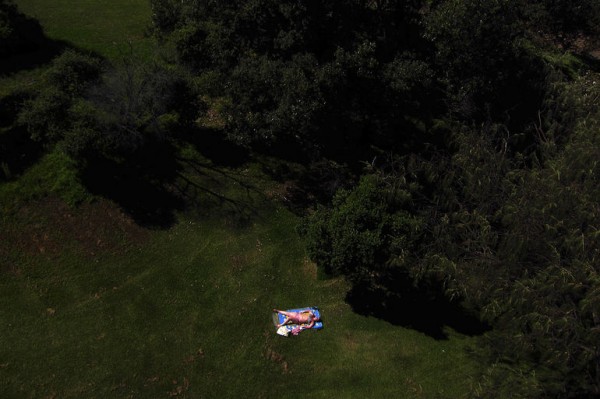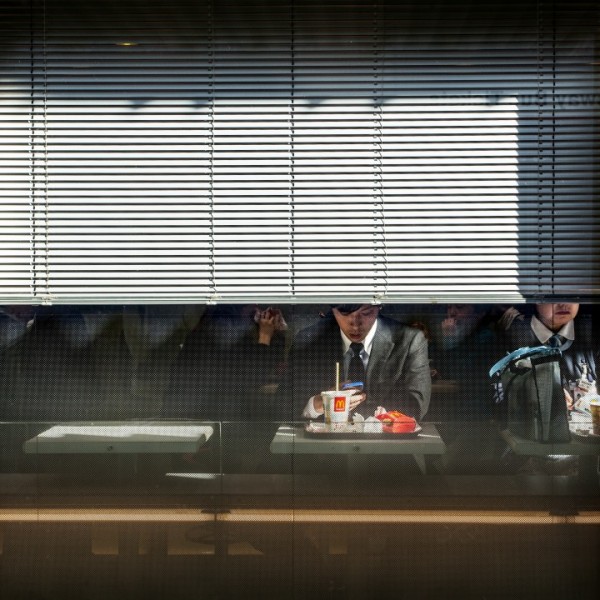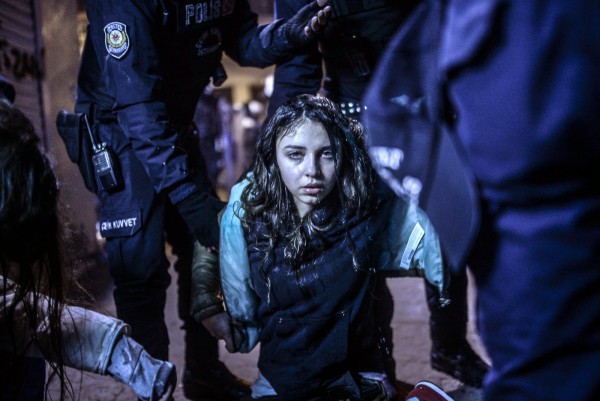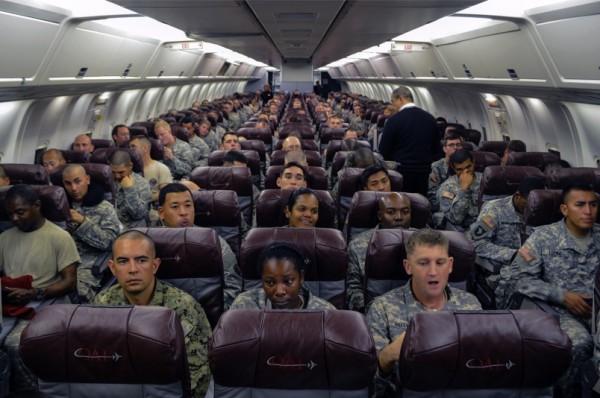Notes
Seeing Surveillance Everywhere and Nowhere
I imagine both photographers resisting the idea these photos relate to surveillance. (I mean, in the current political sense — not like the fact that the act of photojournalism has its parallels.) The sunbathing photo was included in MSNBC’s “Week in Pictures” gallery last Friday. The photo below by Turi Calafato, as part of a series, won a World Press Photo award last Thursday.
In the sunbathing shot (Occam’s Razor, right?), one could just call this a novel view — or just a silly one, the distance serving as the vehicle for modesty.
Based on Calafato’s caption, he also has other things on his mind, particularly isolation and the breakdown of sociability. It states:
Windows like these can be seen in almost every city in the world. The seats of this restaurant are solo, so the act of eating, usually a communal act, is reduced to a solitary activity.
The fact of the matter, though, is that both photos also resonate for their surreptitiousness.
For the past few months, we have been working with Open Society to produce a BagNewsSalon looking at how surveillance is visually represented in the media. In conjunction with Open Society’s current “Watching You, Watching Me” exhibition, BagNews Editor-at-Large, Meg Handler, and curator, Marvin Heiferman, have looked at hundreds, if not thousands of images we plan to reduce to nine for our expert panel to deconstruct online on March 1st.
The caption accompanying the sunbathing photo (remember, that’s all it was traveling with) is also noteworthy for its scantiness:
A woman lies on a towel sunbathing on a hot summer day in a park located near Sydney’s Bondi Beach, Feb. 8, 2015.
Talk about ambiguity, the same description would apply to a photo taken just a few steps away. Because there’s no more information, it leaves us off-balance, uneasy about the context or set of terms. And in this day and age, when that image, or one just like it, could as easily have been pulled off Google Earth, or a civil defense drone, or a surveillance camera, or the telephoto lens of an upstairs neighbor (then published straight to social media), we also register that. In other words, we recognize — at some level, at least –something vulnerable and susceptible in content and composition.
If Calafato’s photo is worth its weight in human dynamics (or cell phone sociology with a fast food chaser), the blinds, the woman who might be more conscious but is cut off at the eyes and the pattern of squares in the window signifying its objectification all speak to furtiveness. I’m expecting our panel of visual and subject matter experts will have a lot to say about why scenes like these can, at once, feel so unnerving and also so iffy.
*** For more information on the March 1st surveillance salon, “The Lens in the Mirror: How Surveillance is Pictured in the Media and Public Culture,” and where to watch, visit and bookmark our post here. You can also reply to our Facebook invite, and follow our FB page here.
(photo 1: David Gray/Reuters. photo 2: Turi Calafato. November 18, 2013. Winner — Daily Life , 3rd prize stories, World Press Photo 2015.)




Reactions
Comments Powered by Disqus